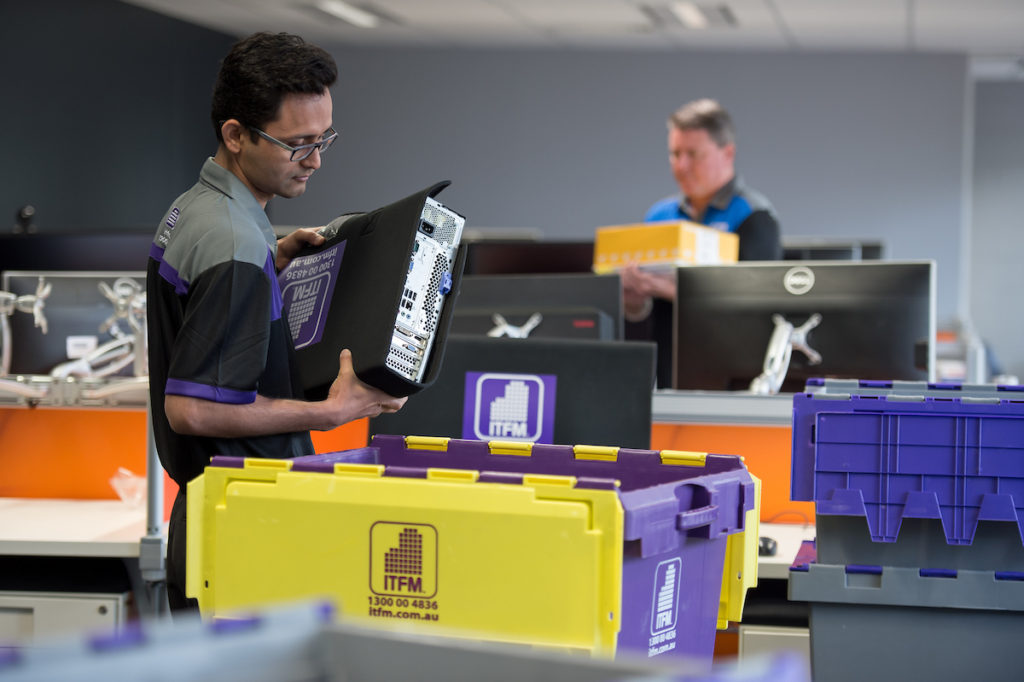
Why Now May be the Perfect Time to Downsize Your Office
The recent pandemic has certainly put a spotlight on commercial office space and begs the question: Do we really need massive buildings for our companies? After all, if you went remote for several months and never saw a drop-off in productivity or revenue, there’s really no sense in overpaying for square footage you don’t need.
How Much Are You Really Spending for Office Space?
According to a recent report by The Wall Street Journal, “Companies expect to reap millions of dollars in savings in the years ahead as they scale back on office space after the coronavirus pandemic emptied workplaces around the country.”
Occupancy rates of commercial office spaces in major U.S. metro areas dropped dramatically at the start of the pandemic. And while they’ve inched up ever so slightly, it’s unlikely that they’ll ever return to their previous levels.
In February 2024, average occupancy rates hovered around 97 to 100 percent in markets like Dallas, Austin, Washington D.C., New York City, and San Francisco. Today, they’re around 25 to 50 percent in these markets.
At first, the decision to move out of offices was a temporary one driven by the need to social distance. But as employees became more comfortable with remote working, businesses started seeing the practicality of saving money. It’s also forced many business owners and executives to consider: How much are we really spending on office space? And do we need to fork over this much dough?
While every market is obviously different, it’s estimated that the average cost of office space per employee is roughly $18,000 per year. Furthermore, companies can save roughly $11,000 per employee per year by requiring employees to work remotely half of the time. That means a company with 100 employees can save $1.1 million per year (or $91,670 per month) simply by shifting to a hybrid business model and cutting office space in half.
Think this is all theory? Consider the following:
- Flexjobs has saved $5 million over the past year from remote work
- IBM has reduced real estate costs by $50 million by downsizing office space
- Sun Microsystems has reduced real estate costs by $68 million by downsizing office space
Business owners often think they have to choose between brick-and-mortar office buildings and being 100 percent remote. However, today’s leading businesses are showing that the combination of a hybrid workforce + smaller office spaces is one of the best paths forward.
5 Tips for Downsizing Your Office With Less Friction
The cost savings are clearly there. So the big question becomes, how do you downsize as efficiently as possible? Here are several suggestions:

1. Focus on Essentialism
Author Greg McKeown calls essentialism the “disciplined pursuit of less.” It’s the idea that only certain things matter (and that everything else should be ruthlessly eliminated). While we typically talk about essentialism in personal terms, the same principles can also be applied in business.
If you truly take the time to analyze your business, assets, and balance sheet, you’ll find that so much of what you spend time and money on isn’t actually essential to your business. The classic 80/20 principle would tell you that 20 percent of your inputs and investments are producing 80 percent of your results. By stripping back and focusing on the 20 percent, you can eliminate many non-essential things.
One of the byproducts of focusing on essentialism is that your physical demands for space shrink. For example, you may decide that your company can finally go paperless, which means you no longer need fax machines, copiers, printers, and filing cabinets.
Or you might realize that having a 2,000 square-foot kitchen isn’t necessary when a large break room with an industrial-sized refrigerator and a couple of microwaves will suffice.
Get clear on what’s essential to your business, and the idea of downsizing becomes much more practical.

2. Plan for IT Relocation
Your IT equipment and assets are something to carefully consider during a downsizing event.
As Invision suggests, “Use the move as an opportunity to evaluate and upgrade your technology, if needed. Hardware does have a lifespan. If your equipment is nearing its end of life and replacing it is within budget, a move might be a smart time to upgrade.”
It’s also smart to hire an experienced IT relocation team to ensure all equipment is properly moved and installed for as little downtime as possible.
3. Find the Right Moving Company
As you get closer to moving, do your due diligence and find the right moving company. You want a company that’s experienced with corporate relocations. They have smooth and proven processes that allow them to quickly pack up your current office and safely deliver and install everything at the new office with minimal hiccups. Typically, a local company is best.

4. Lease Rather Than Buy
Unless you find a deal that you can’t possibly pass up, you’re better off leasing rather than buying. This makes sense both financially and practically.
Financially, leasing means no down payment, repairs, or property taxes. You can also deduct your lease payments and other expenses. Practically, it prevents you from being boxed in. You might find in 12 or 24 months that you can downsize even more. And rather than having to sell your property, you can just wait until the lease ends and find another.
5. Use Your Cost Savings Strategically
Let’s say you’re able to free up $15,000 per month by downsizing. The next priority is to figure out how you’re going to utilize these savings. While you can technically pocket it and count it as additional profits, you might be better off leveraging that money for sales and marketing. This could potentially give you an even greater return on your investment.

Create a Lean, Mean Business Machine
It’s not always about having the biggest business or the most resources. Sometimes the most successful and profitable companies are the ones that operate in the leanest fashion. Reducing overhead and eliminating non-essential expenses is a must. In 2024 and beyond, excessive office space is considered a non-essential expense. By downsizing to a smaller footprint, you can lower your costs, keep your team happier, and enjoy a fatter bottom line.